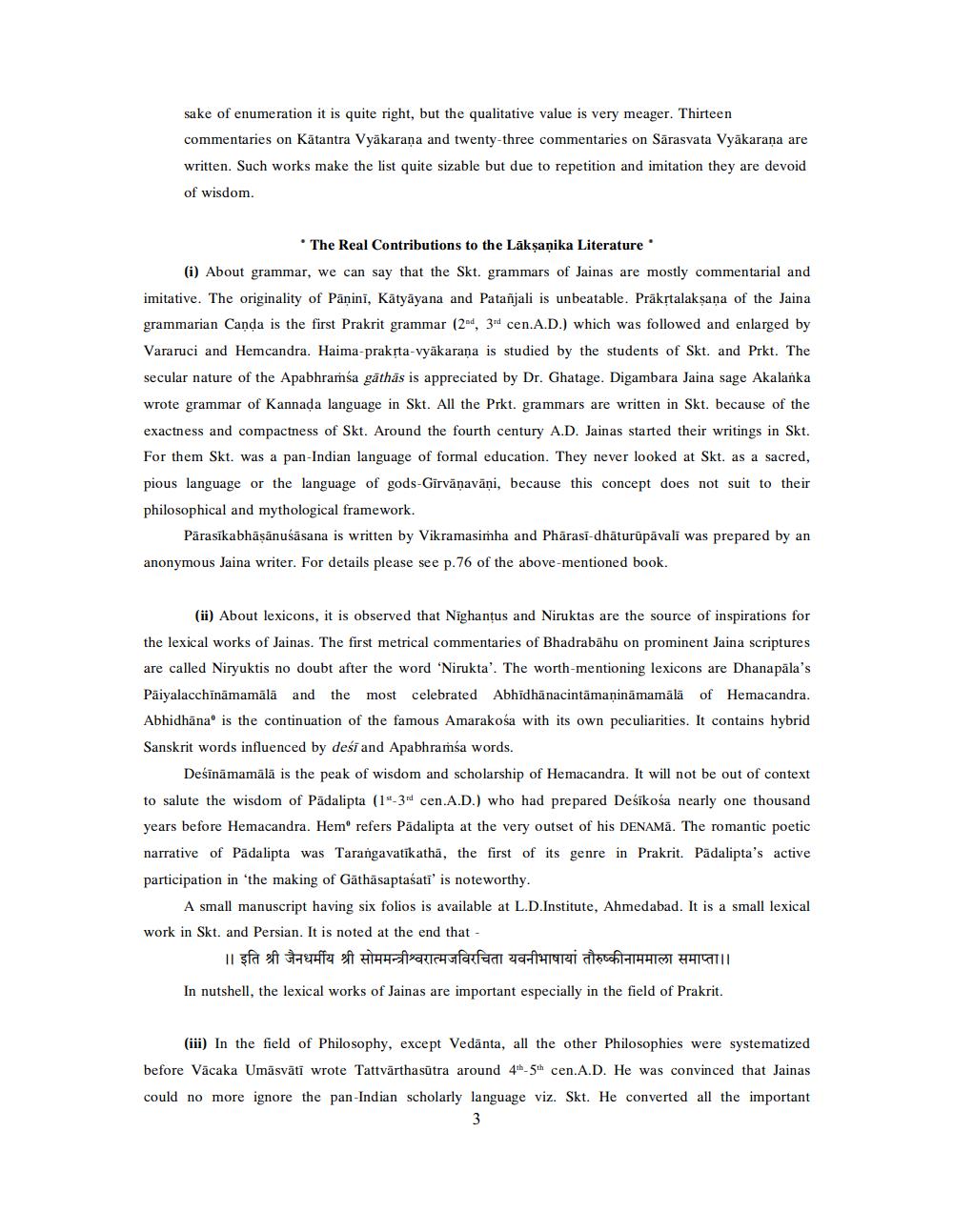________________
sake of enumeration it is quite right, but the qualitative value is very meager. Thirteen commentaries on Kātantra Vyakarana and twenty-three commentaries on Sārasvata Vyakarana are written. Such works make the list quite sizable but due to repetition and imitation they are devoid of wisdom.
* The Real Contributions to the Lākṣaṇika Literature (i) About grammar, we can say that the Skt. grammars of Jainas are mostly commentarial and imitative. The originality of Pāņini, Kātyāyana and Patañjali is unbeatable. Prākrtalaksana of the Jaina grammarian Canda is the first Prakrit grammar (2nd, 3rd cen.A.D.) which was followed and enlarged by Vararuci and Hemcandra. Haima-prakrta-vyākarana is studied by the students of Skt. and Prkt. The secular nature of the Apabhramsa gāthās is appreciated by Dr. Ghatage. Digambara Jaina sage Akalanka wrote grammar of Kannada language in Skt. All the Prkt. grammars are written in Skt. because of the exactness and compactness of Skt. Around the fourth century A.D. Jainas started their writings in Skt. For them Skt. was a pan-Indian language of formal education. They never looked at Skt. as a sacred, pious language or the language of gods-Girvāņavāni, because this concept does not suit to their philosophical and mythological framework.
Pärasīkabhāsānuśāsana is written by Vikramasimha and Phārasi-dhäturupävali was prepared by an anonymous Jaina writer. For details please see p.76 of the above-mentioned book.
(ii) About lexicons, it is observed that Nighantus and Niruktas are the source of inspirations for the lexical works of Jainas. The first metrical commentaries of Bhadrabāhu on prominent Jaina scriptures are called Niryuktis no doubt after the word 'Nirukta'. The worth-mentioning lexicons are Dhanapāla's Päiyalacchināmamālā and the most celebrated Abhidhānacintāmaņināmamālā of Hemacandra. Abhidhāna is the continuation of the famous Amarakośa with its own peculiarities. It contains hybrid Sanskrit words influenced by desi and Apabhramsa words.
Deśīnāmamālā is the peak of wisdom and scholarship of Hemacandra. It will not be out of context to salute the wisdom of Padalipta (1"-3rd cen.A.D.) who had prepared Desikośa nearly one thousand years before Hemacandra. Hem refers Padalipta at the very outset of his DENAMă. The romantic poetic narrative of Padalipta was Tarangavatikatha, the first of its genre in Prakrit. Pädalipta's active participation in the making of Gäthäsaptasati' is noteworthy.
A small manuscript having six folios is available at L.D.Institute, Ahmedabad. It is a small lexical work in Skt. and Persian. It is noted at the end that -
॥ इति श्री जैनधर्मीय श्री सोममन्त्रीश्वरात्मजविरचिता यवनीभाषायां तौरुष्कीनाममाला समाप्ता।।
In nutshell, the lexical works of Jainas are important especially in the field of Prakrit.
(iii) In the field of Philosophy, except Vedānta, all the other Philosophies were systematized before Vācaka Umāsvāti wrote Tattvärthasūtra around 4th-5th cen.A.D. He was convinced that Jainas could no more ignore the pan-Indian scholarly language viz. Skt. He converted all the important




